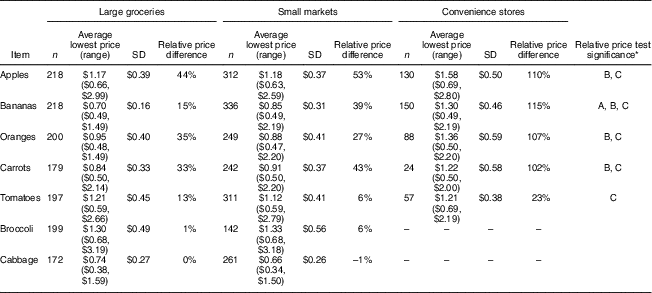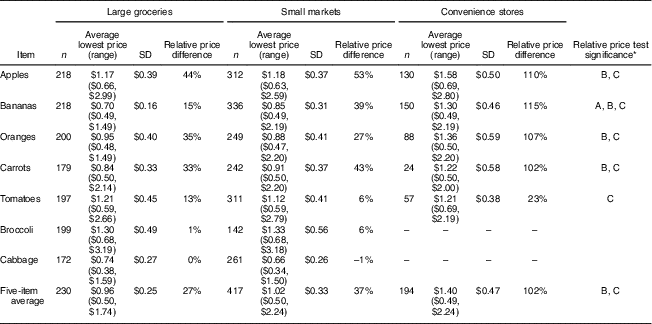Original text and correction:
ORIGINAL TEXT (page 1644, Results)
Table 3 Average lowest price per pound and relative price difference of seven produce items by store type for stores in the CX3 sample. Relative price differences are the difference between the observed lowest store price and the average lowest price for chain supermarkets in the same county that month, expressed as a percentage of the average county chain supermarket lowest price

* The test significance column indicates the significance (at p<.05) of two-way tests of the hypothesis that the relative price differences differ between store type categories. The letter A indicates that ‘Large Groceries’ and ‘Small Markets’ stores have different relative price differences, B that ‘Large Groceries’ and ‘Convenience’ stores differ, and C that ‘Small Markets’ and ‘Convenience’ stores differ.
CORRECTION
The last line of Table 3, representing a composite analysis of five produce items, was omitted in the published version and is included in this corrigendum.
Table 3 Average lowest price per pound and relative price difference of seven produce items by store type for stores in the CX3 sample. Relative price differences are the difference between the observed lowest store price and the average lowest price for chain supermarkets in the same county that month, expressed as a percentage of the average county chain supermarket lowest price

* The test significance column indicates the significance (at p<.05) of two-way tests of the hypothesis that the relative price differences differ between store type categories. The letter A indicates that ‘Large Groceries’ and ‘Small Markets’ stores have different relative price differences, B that ‘Large Groceries’ and ‘Convenience’ stores differ, and C that ‘Small Markets’ and ‘Convenience’ stores differ.






